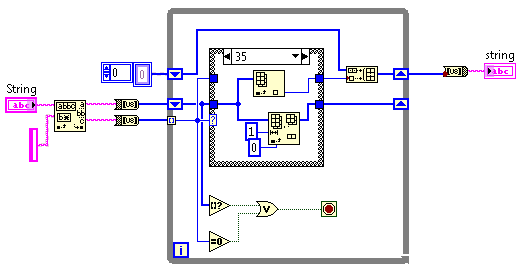系统会为您提供一个不包含换行符的可打印ASCII字符串,以及一个包含空格()和哈希(#)的多行“ mold” 。
您必须在字符串中一个接一个地输入字符,并使用字符串中的字符按从左到右,从上到下的顺序替换哈希。如果字符串太短而无法填充模具,则停止输出;如果字符串太长,则截断字符串以准确填充模具。
示例字符串/模具(字符串太长,被截断):
Loremipsumdolorsitamet,consecteturadipiscingelit.Namsuscipitmagnanoneratgravidacondimentum.Vestibulumnecnisllorem.Fuscemolestieviverranibh,eueleifendnislplaceratnon.Namblanditturpislacus,vitaemolestielacusimperdietquis.Nullapulvinar,exquissollicitudinfacilisis,eratnullavolutpatlectus,etluctusenimvelitegetex.Inhachabitasseplateadictumst.Donecinterdumnullalacinia,sodalesloremin,eleifendturpis.Pellentesqueanisimi.Aeneannonlobortisdiam,quisaliquetquam.Aeneanaugueipsum,imperdietsedaliquetnon,volutpategetsapien.Nullampharetranullaquispretiumornare.Aliquamfermentumvestibulummassavitaevehicula.
###########################################################
##### ############## ###### ###### ######################
##### ## ###### # ##### ###### ######## ######
###### # # #### #### ##### ###### ####### ###### #####
###### ### ### ##### ###### ####### ####### #####
###### ##### ### ########### ###### ####### ### ######
###### ###### ### ########## ###### ##### #########
################## #### ##########################
###########################################################
输出示例:
Loremipsumdolorsitamet,consecteturadipiscingelit.Namsuscipi
tmagn anoneratgravid acondi mentum .Vestibulumnecnisllore
m.Fus ce molest i evive rranib h,euelei fendni
slplac e r atno n.Na mblan dittur pislacu s,vita emole
stiela cus imp erdie tquis. Nullapu lvinar, exqui
ssolli citud inf acilisis,er atnull avolutp atl ectus,
etluct usenim vel itegetex.I nhacha bitas seplatead
ictumst.Donecinter dumn ullalacinia,sodalesloremin
,eleifendturpis.Pellentesqueanisimi.Aeneannonlobortisdiam,q
示例字符串/模具(字符串太短,输出停止):
This probably won't look good.
### ### ### ###
# # # # # #
### ### # # #
# # # # #
# # ### ###
对应的输出:
Thi s p rob abl
y w o n '
t l ook g o
o d .
以字节为单位的最短代码获胜。
将此想法归功于此网站。

